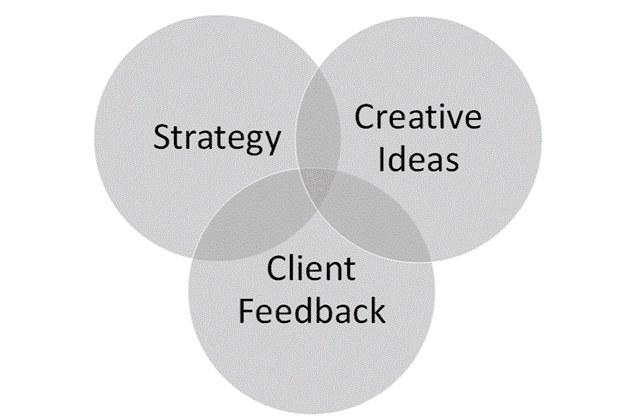Friday afternoon you come out of the creative presentation feeling exhausted. While some of the ideas were well received, the overall creative direction didn’t quite hit the mark. The client feels the best course of action is to create a new concept altogether.
Your budgets are maxed out and your capacity for the project feels drained. How did it get to this point? You begin asking yourself questions like, “Is the client out to lunch? Do they just not get it? Did we miss the mark on strategy and recommendations? Did we present the creative so poorly that they really didn’t grasp the idea?”
As you circle through these questions and more, you find no answers; you’re left still wondering what went wrong.
We’ve all been in this situation before. Some of us bounce back quickly, while others bang heads against the proverbial wall repeatedly as if the past can be changed by doing so.
In my experience, the pressure in these situations mounts because expectations on both sides are unclear and unmet. So, then, how do we combat this scenario and develop a winning formula? This is where agile ideation comes into play.

Agile ideation is the combination of gaining quick rounds of feedback throughout the creative process to ensure client buy-in on both creative and strategy. It’s about iterating more frequently instead of building anticipation for the big reveal (or sometimes, unfortunately, the big flop). Agile ideation maintains the integrity of great creativity built on a great strategy. It also includes a third key element: client buy-in through frequent engagement in the process. The common mistake in the situation described at the beginning here is preparing and presenting the finished plan without first getting any feedback to ensure it’s on the right track. Here’s how agile ideation could approach that project differently.
- Creative brainstorm and ideation session
- Determine top 3-5 ideas from the session to build out further
- Present top 3-5 ideas with short rationale and direction for feedback
- Client advises preference on 1-2 ideas
- Agency develops creative direction more deeply and shows how the idea can extend
- Present idea extended with rationale to client for feedback
- Using feedback, build out the final plan for execution elements with creative direction and skin
- Present final plan, tactical execution, budget and calendar with creative
- Finalize budget and plan based on feedback for signoff
While this process may seem long, in reality, it moves along just as quickly as landing “the big baked plan” after the first meeting.
However, there is greater assurance that you are closer to the strategy, have finalized creative, and a solid execution plan at the end of it. While I love the creative ideation and process, we all would do well to take a step back and question how we can make our processes better.
Take a stab at testing out agile ideation, I guarantee it will land you closer to strategy and creative at the end of the process – without all that guesswork.

